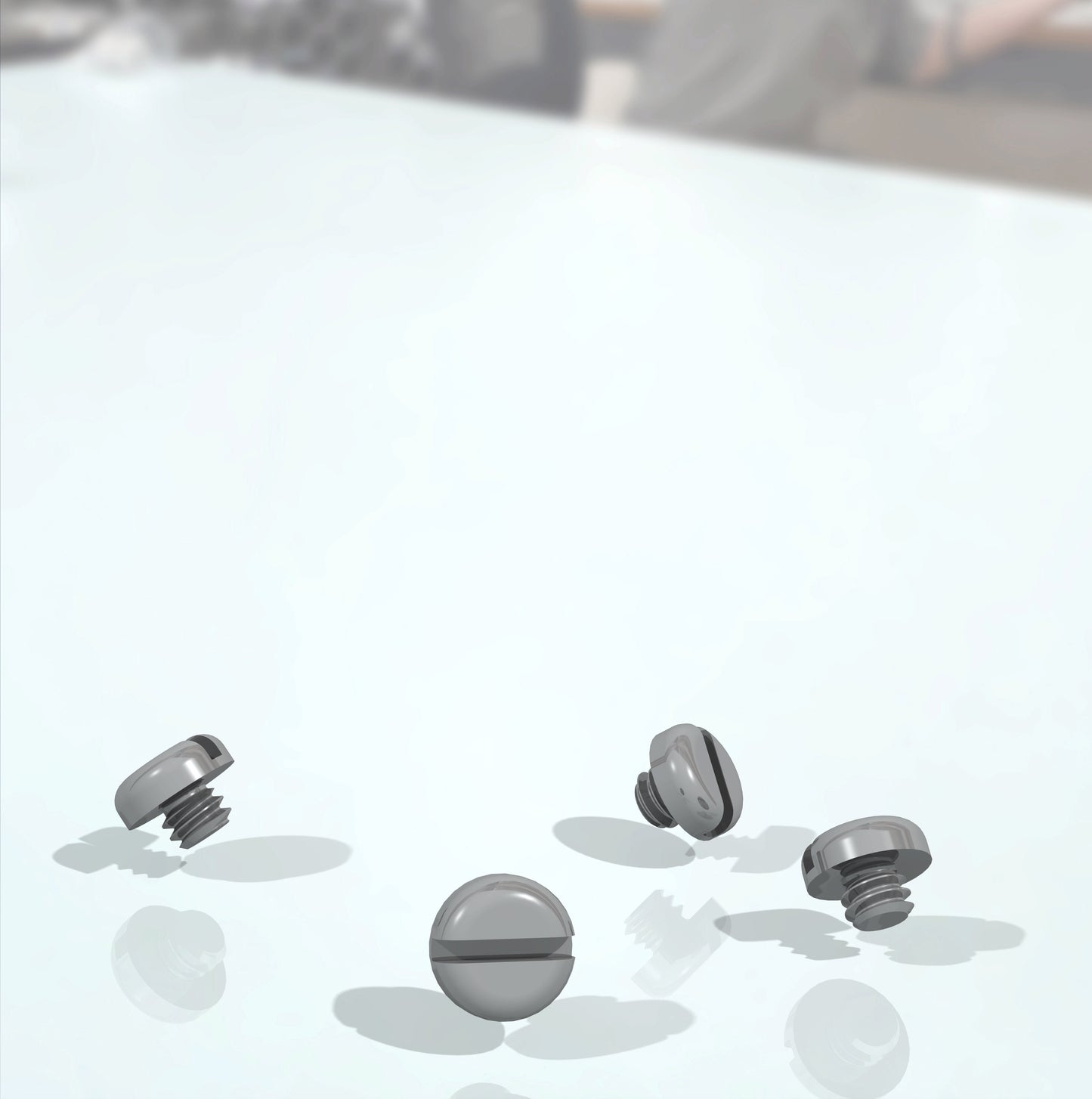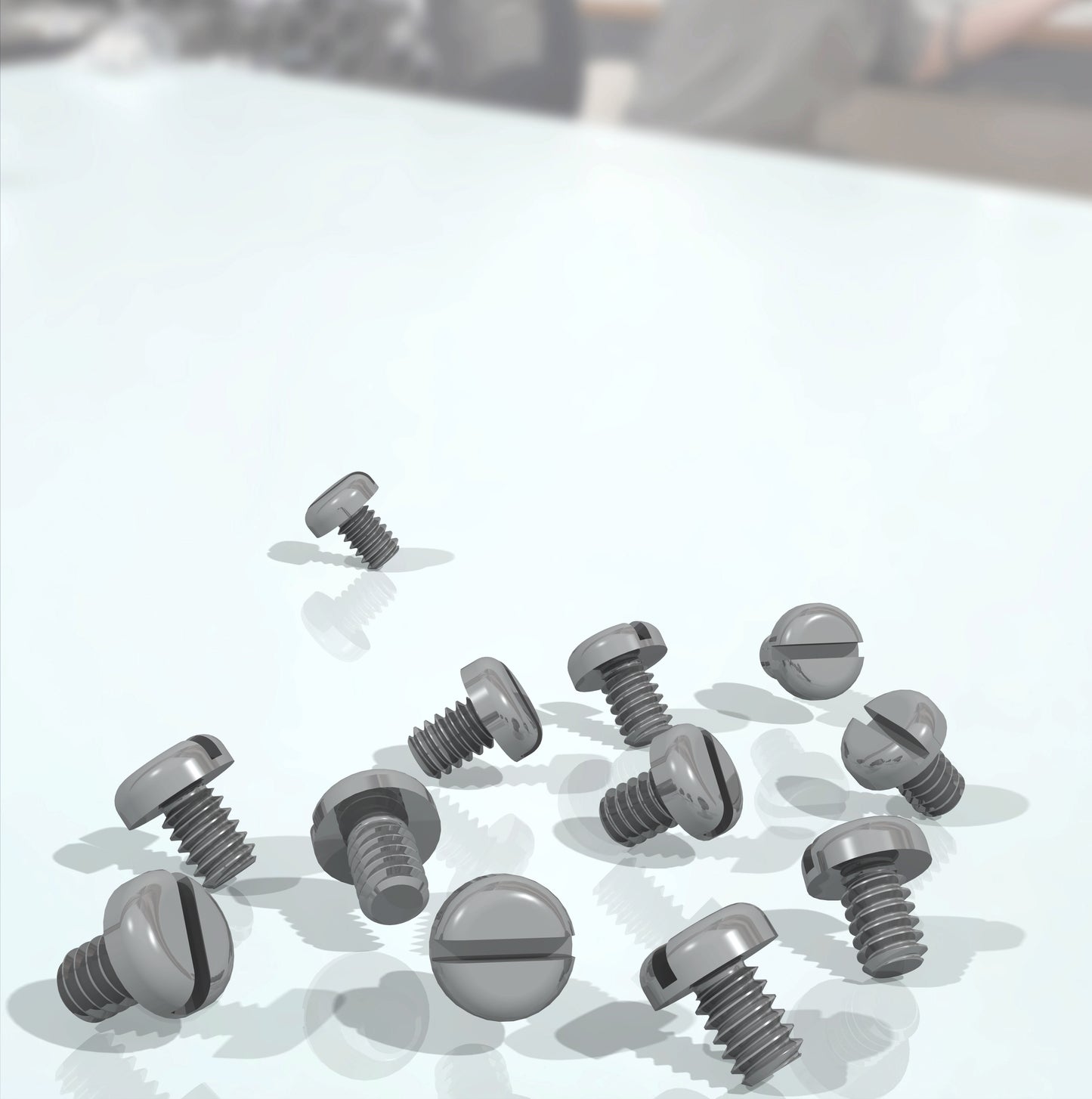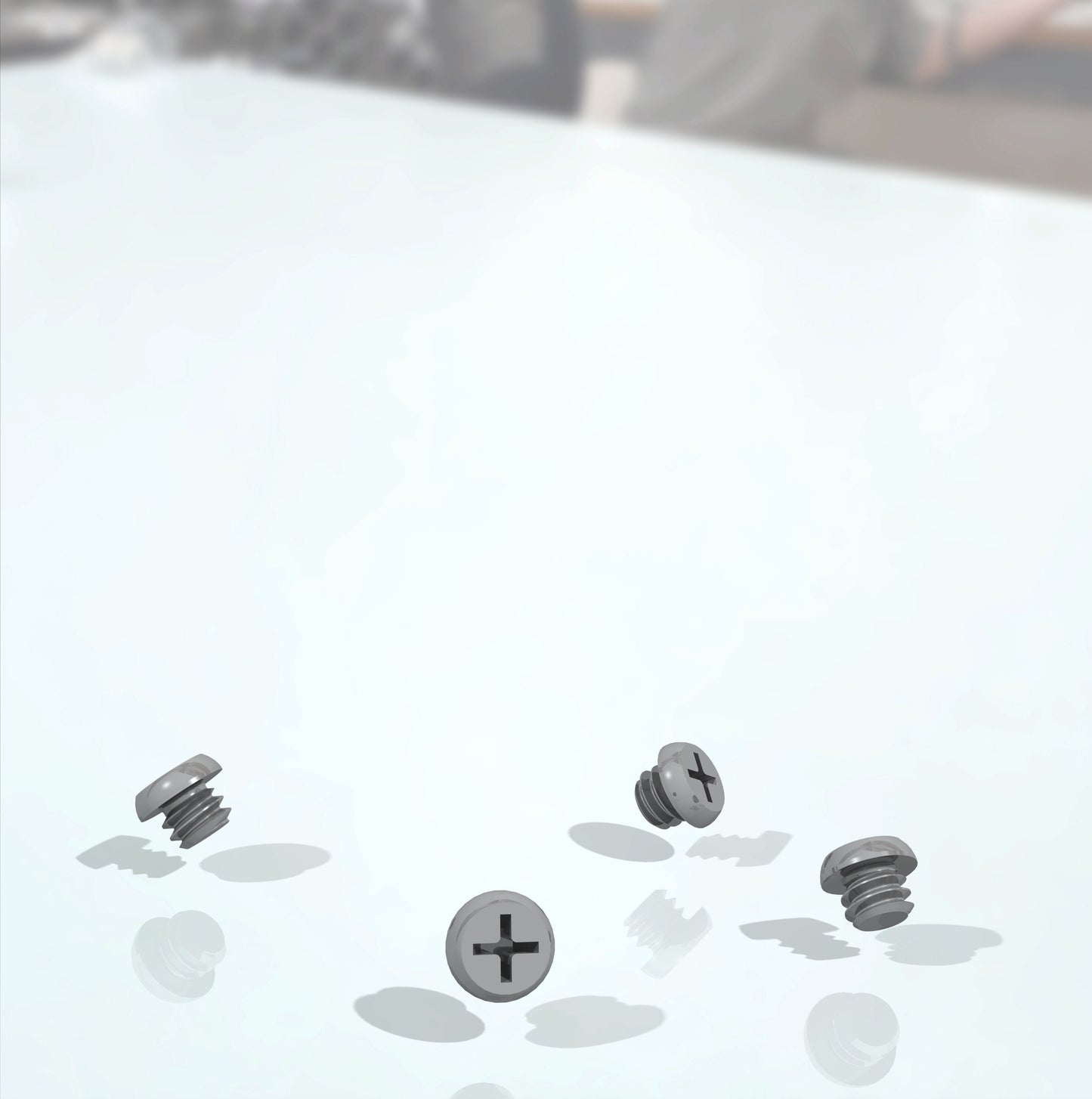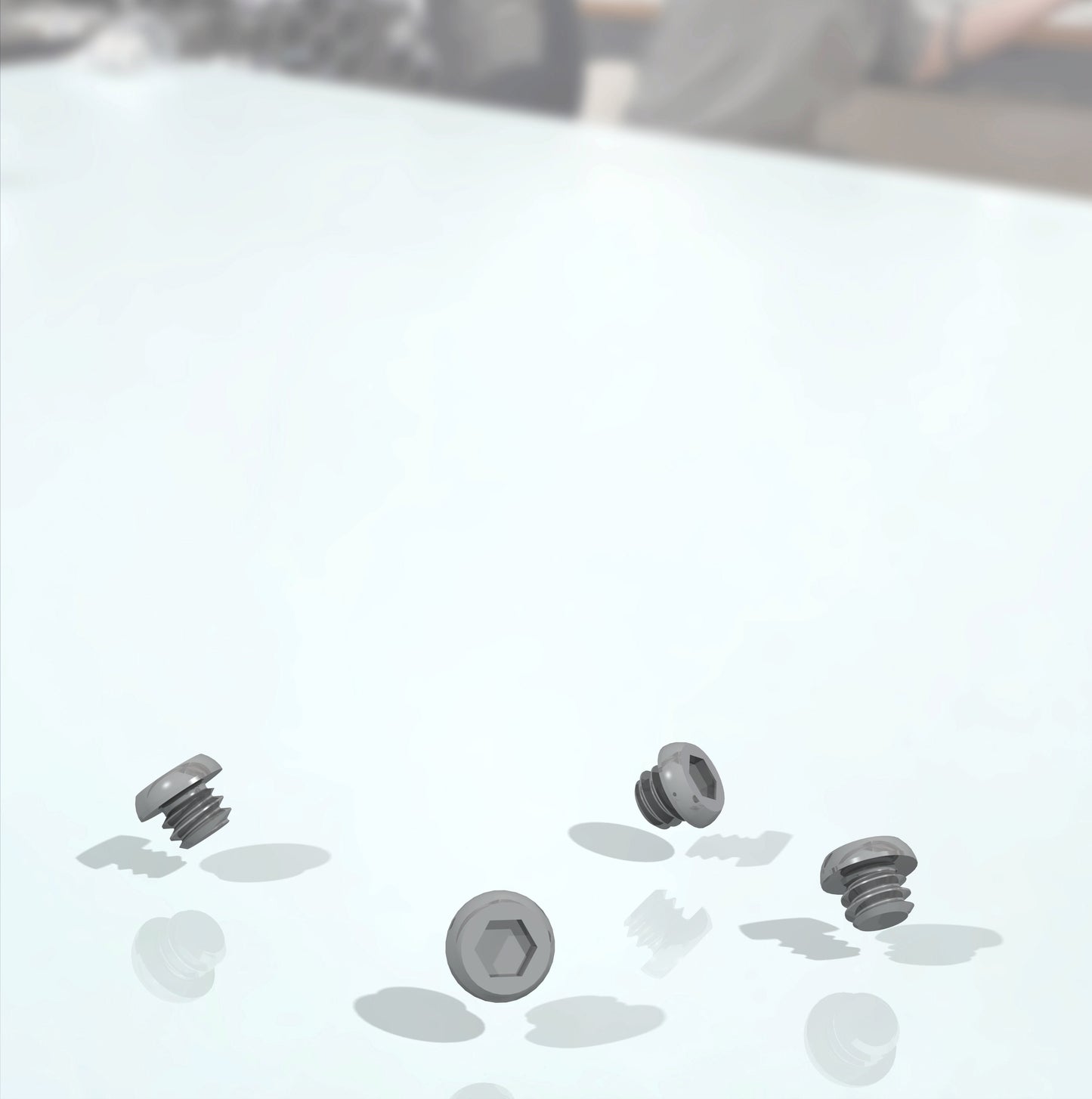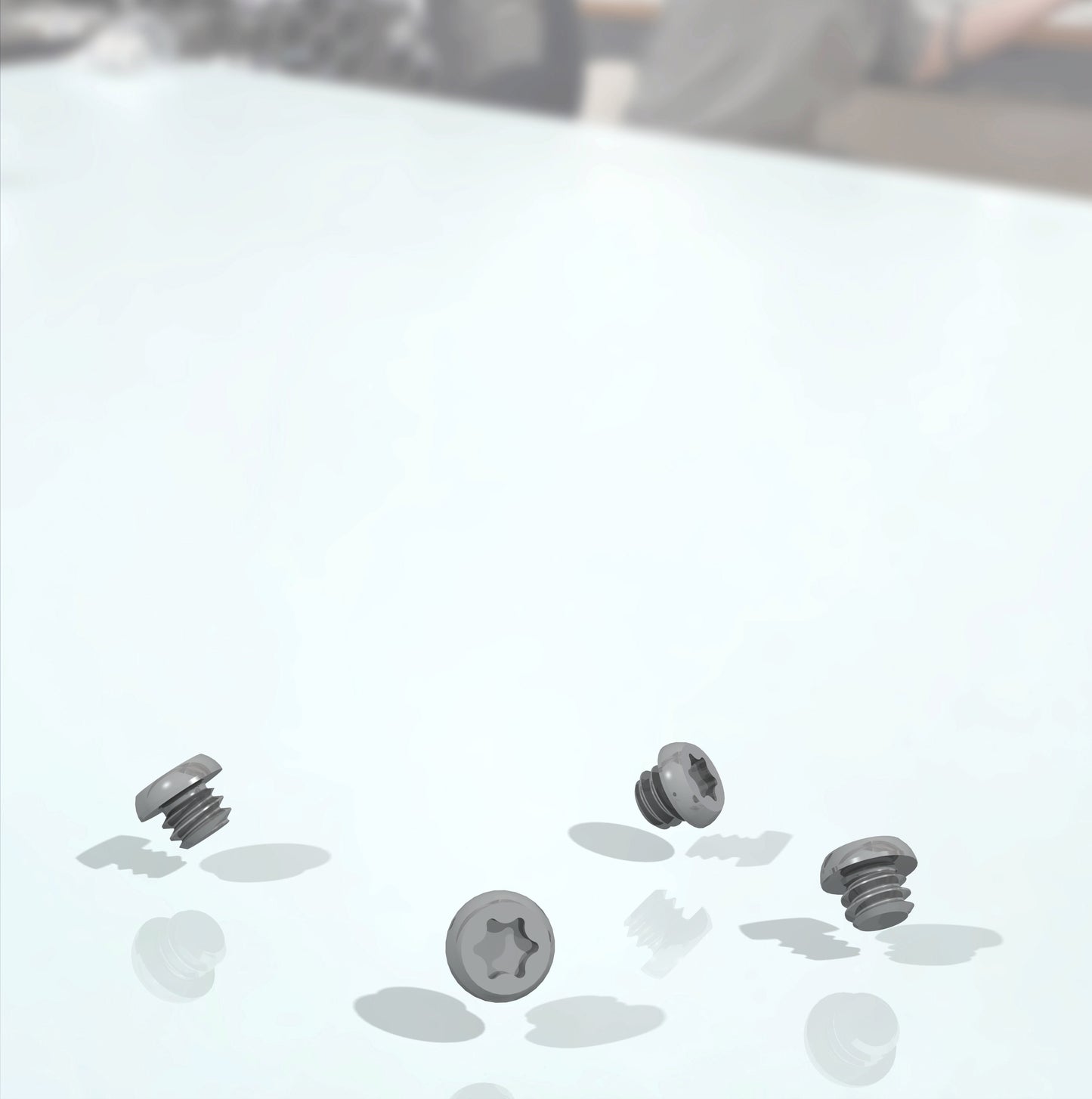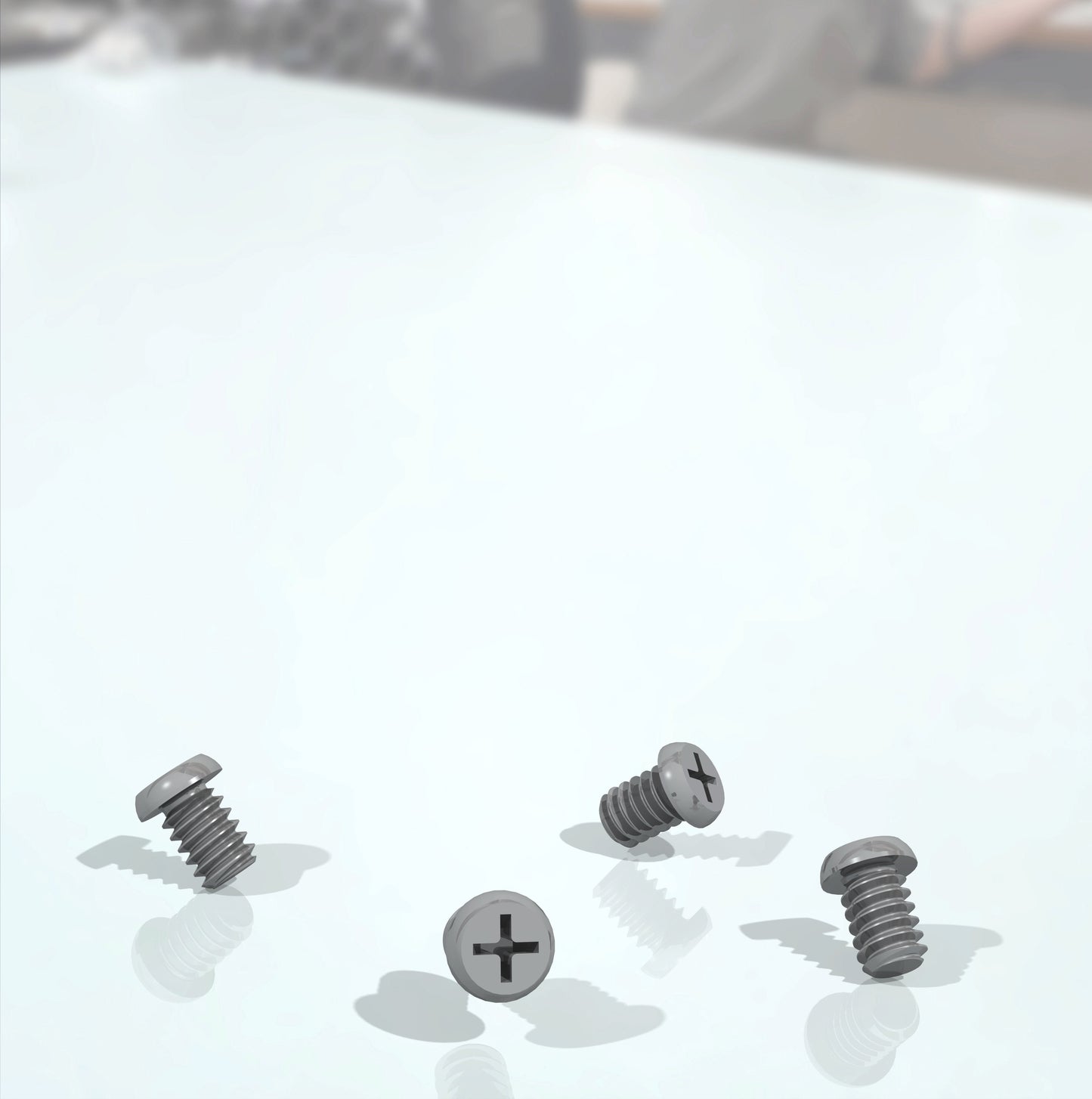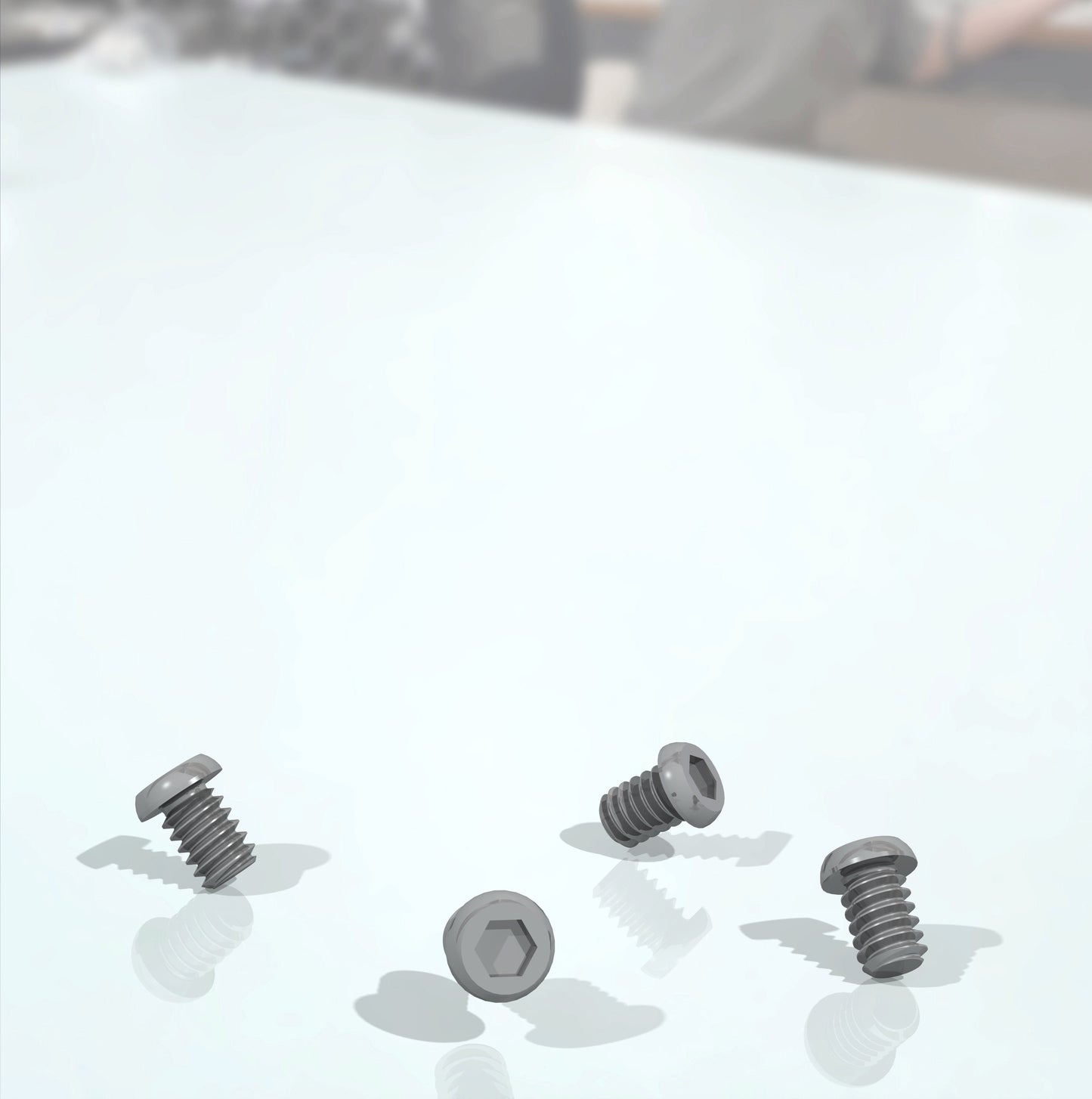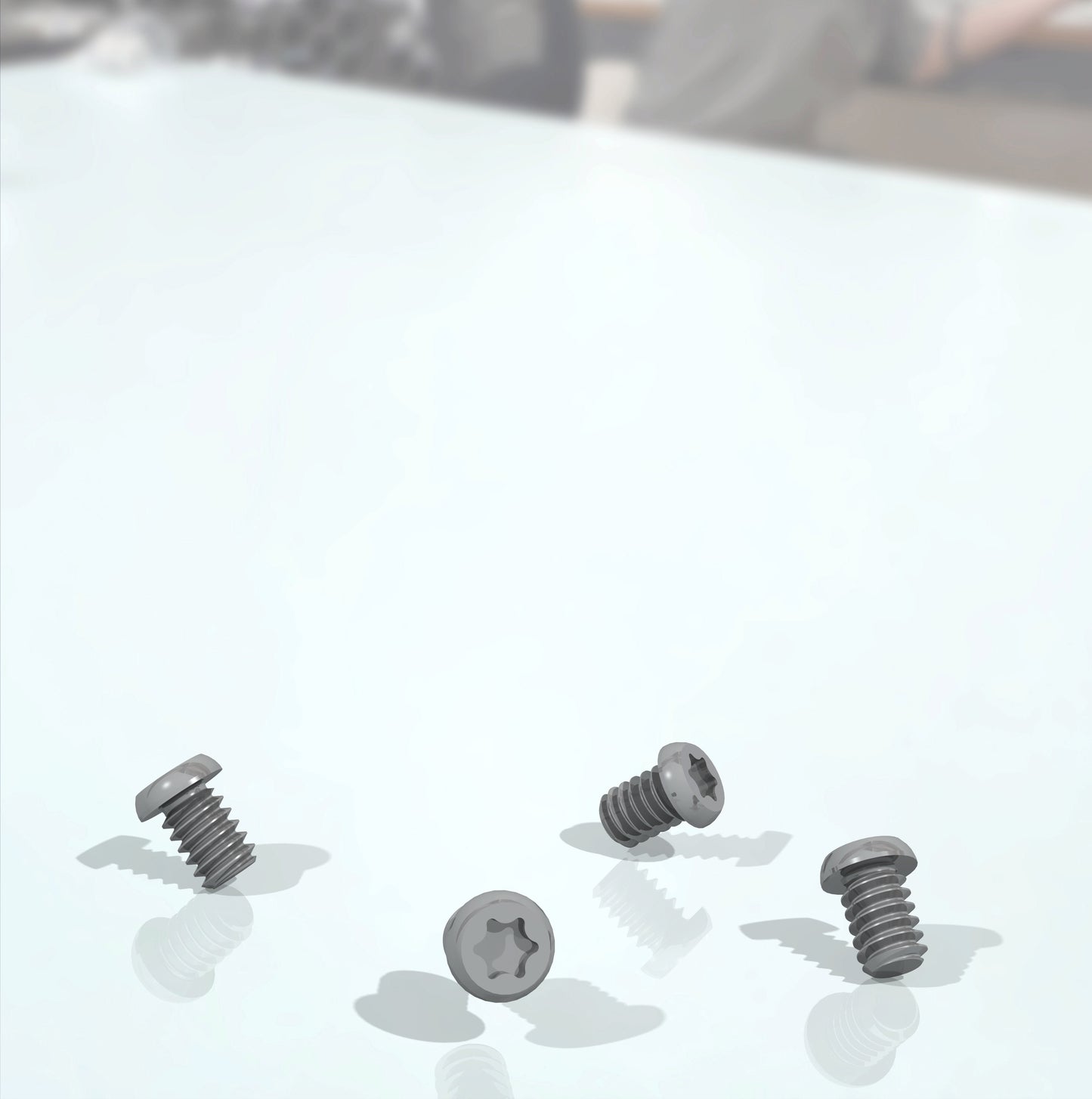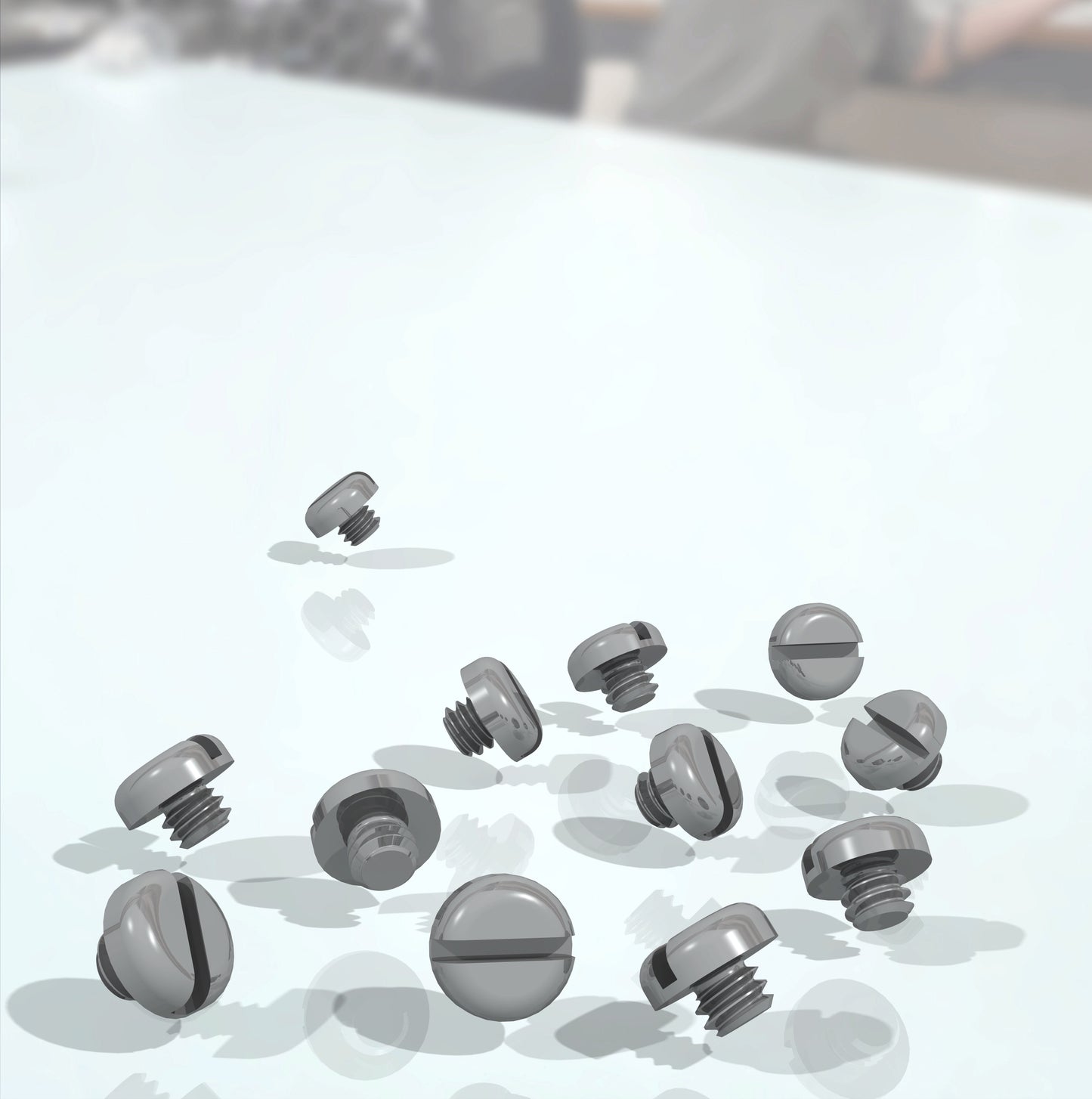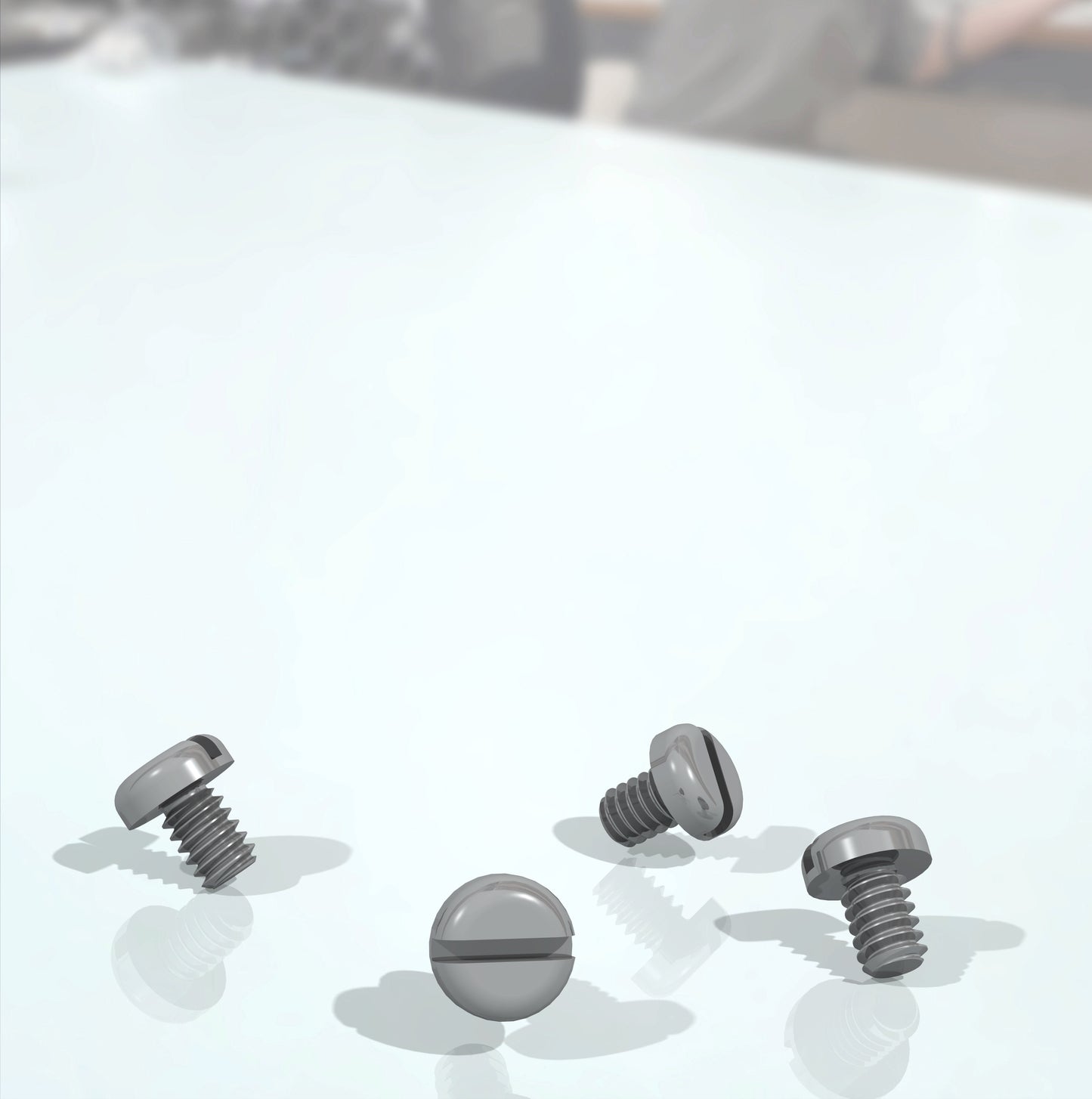UHV Store GmbH
🔩 Small Precision Screws – Various Materials, Head and Drive Types
🔩 Small Precision Screws – Various Materials, Head and Drive Types
Couldn't load pickup availability
Screws for Sample Holders: Material Selection for Ultra High Vacuum, High-Temperature, and Cryogenic Applications
Screws are critical components for securely mounting samples in research, laboratory, and testing environments, particularly under extreme conditions such as high temperatures, vacuum, and cryogenic conditions. The material choice for these screws is crucial, especially when operating in vacuum, heating, or cryogenic environments. Proper material selection ensures stability, minimizes contamination, and ensures optimal performance. Below, we outline the general properties of four commonly used materials for screws in sample holders, focusing on their behavior under vacuum, high-temperature, and cryogenic conditions.
High vacuum compliant cleaned
SS - Stainless Steel
Specifications:
- Melting Point (at atmospheric pressure): ~1,400–1,450°C
- Thermal Conductivity: ~15 W/m·K
- Thermal Expansion (20-100°C): ~16.5 µm/m·°C
- Magnetization: Typically non-magnetic in the annealed state, may exhibit slight magnetism if cold-worked or hardened.
General Properties: Stainless Steel A2/A4 is widely used for general laboratory applications and room-temperature experiments due to its corrosion resistance and strength. It is suitable for UHV applications at room temperature, especially when non-magnetic properties are not a absolut strict requirement.
Mo - Molybdenum
Specifications:
- Melting Point (at atmospheric pressure): ~2,623°C
- Thermal Conductivity: ~138 W/m·K
- Thermal Expansion (20-100°C): ~5.5 µm/m·°C
- Magnetization: Paramagnetic, weakly attracted to magnetic fields but does not retain magnetization.
General Properties: Molybdenum is highly suitable for both cryogenic and high-temperature applications due to its low thermal expansion, high melting point, and excellent thermal conductivity
Ta - Tantalum
Specifications:
- Melting Point (at atmospheric pressure): ~3,020°C
- Thermal Conductivity: ~57 W/m·K
- Thermal Expansion (20-100°C): ~7.3 µm/m·°C
- Magnetization: Paramagnetic, exhibiting weak magnetic properties.
General Properties: Tantalum offers superior corrosion resistance, particularly in chemically demanding environments. It remains stable under both high-temperature and cryogenic conditions due to its high melting point and low thermal expansion. Tantalum's high resistance to oxidation and biocompatibility also make it ideal for cleanroom environments. Its thermal conductivity is much lower than that of Molybdenum but still performs well in a range of environments, from cryogenics to elevated temperatures.
W - Tungsten
Specifications:
- Melting Point (at atmospheric pressure): ~3,422°C
- Thermal Conductivity: ~174 W/m·K
- Thermal Expansion (20-100°C): ~4.5 µm/m·°C
- Magnetization: Paramagnetic, weakly magnetic, and does not retain magnetization.
General Properties: Tungsten is one of the most heat-resistant materials. It has exceptional strength and thermal conductivity, making it highly suitable for high-temperature applications. Tungsten is also effective in cryogenic environments due to its low thermal expansion and high thermal conductivity.
Vapor pressure Curves
Conclusion:
Selecting the right material for screws in sample holders is crucial for ensuring reliable performance in high-temperature, vacuum, and cryogenic conditions. Stainless Steel is ideal for general laboratory use at room temperature but is not suited for high temperatures or cryogenic environments. Materials like Molybdenum, Tantalum, and Tungsten provide superior performance in extreme conditions, such as high temperatures or cryogenics, due to their high melting points, low thermal expansion, and stable properties in UHV.
To prevent issues like cold welding in UHV systems, it is recommended to use dissimilar materials for the screw and sample holder, or to incorporate dry lubricants, such as Molybdenum Disulfide, to reduce friction during assembly.
